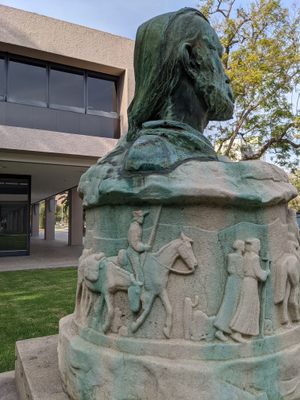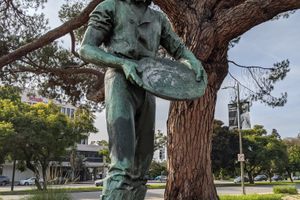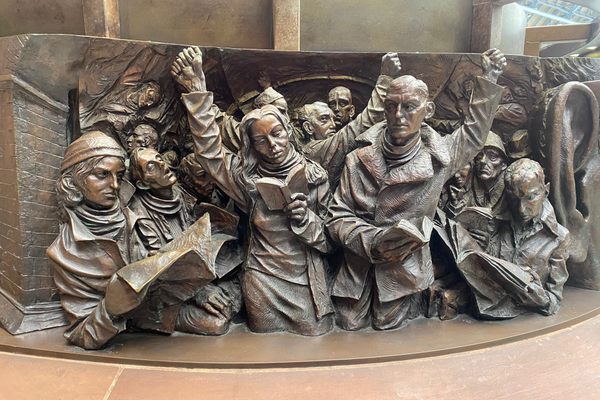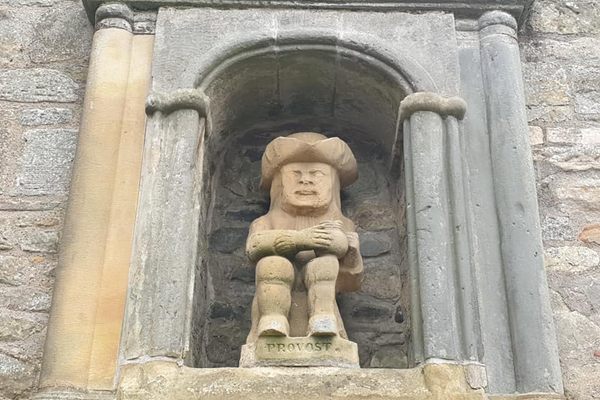About
This illustrative bust was created by Henry Lion in 1927. The work of art is dedicated to Juan Bautista De Anza by the Native Sons of the Golden West and the Los Angeles Historical Society.
A soldier and explorer, De Anza led the first Spanish settlers from the Mexican state of Sonora through Arizona and the San Carlos Pass far north to Monterey, California—a distance of some 1,700 miles.
The expedition was actually two meandering trips that lasted several years, though the plaque notes 1775 and reads simply: “Done for the love of California.”
The bronze bust of the bearded De Anza is atop a circular plinth that features a three-dimensional frieze of that journey; depicted are settlers on horseback, priests with a crucifix staff, soldiers, and some cattle, while in the background are rocks, boulders, and large cactuses. De Anza’s actual party consisted of three padres, 20 soldiers, 11 servants, 35 mules, 65 cattle, and 140 horses.
One of the founders of Spanish California and later Governor of New Mexico, De Anza is celebrated in many places, most notably by a 1,200 mile National Historic Route hiking and driving trail through California and Arizona that’s inspired by his travels.
The small town of Anza, near Palm Springs, has a population of a little over 3,000 people. There’s a state park and community green spaces in Calabasas and Ontario, California named for him.
Another statue can be found in Riverside, and another in Lake Merced Park in San Francisco. There are several streets, schools, and even a hotel in California that are named after De Anza.
De Anza died in 1788 and is buried in a grand church in Arizpe in Sonora, Mexico.
Related Tags
Know Before You Go
This statue is almost directly opposite the memorial statue to "Dan the Miner", which is located in the Carthay Circle pocket park.
Community Contributors
Added By
Published
December 14, 2021































